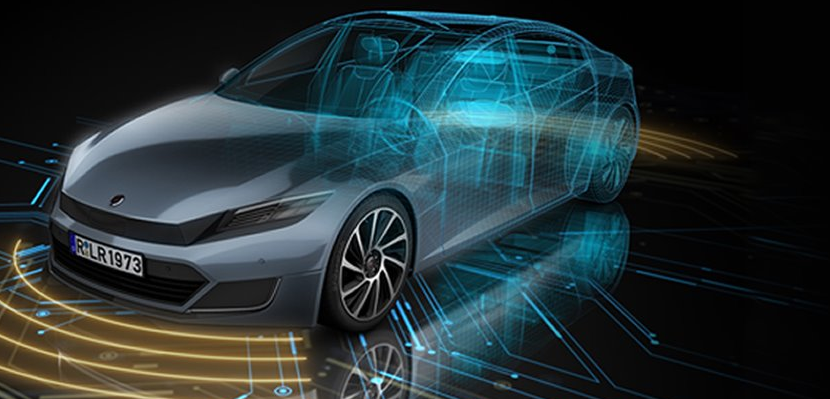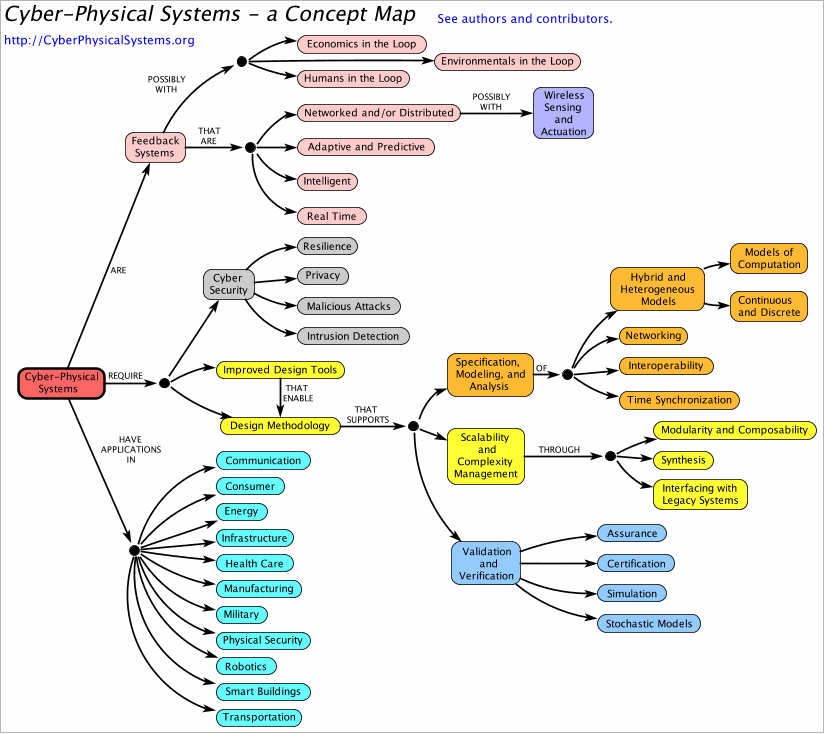Software Development for Cyber-Physical Systems

Develop embedded systems merged with physical processes
What do we mean when we say cyber-physical? It is a familiar term earning increasing relevance today, and will gain even more relevance going forward.
Cyber-Physical Systems (CPS) are defined both by the physical and cyber components of a system. The embedded software uses the network to control real-world processes and receives information from sensors. This creates a feedback loop that helps refine the behavior where physical and cyber intersect.
While the term Cyber-Physical Systems relates to many other popularized terms such as the Internet of Things (IoT, IIoT), Machine-to-Machine (M2M), Industry 4.0, Fog computing, and numerous other buzzwords that purport to describe a vision of “smart” connected creations that deeply unite physical and information realms, CPS more deeply comprises advanced technology research areas such as sensor fusion, machine learning, cloud computing, augmented reality, and artificial intelligence.
Academia has long studied CPS and the implications of CPS, framed as a heterogeneous technological blending of multiple domains. Result of such academic interest presents a useful conceptual map of Cyber-Physical Systems .

CPS is an intersection, not a union, of that which is considered virtual to that which is physical. It is no longer enough to separately understand, develop, manage and maintain cyber vs. physical components independently. It is necessary instead to understand their interaction.
The general understanding of Cyber-Physical Systems characteristics includes:
- Cyber capability existing in every physical component
- Components are pervasively networked
- Presence of sensing capabilities/technologies
- Operating in Real-time & providing closed-loop control
The substantial and growing inclusion of these characteristics within the major subsystems of today’s modern road vehicles is emblematic of CPS. Modern vehicles are collections of multiple processors, networks, sensors, and embedded systems, effectively making the whole vehicle itself a system of systems.
A significant CPS challenge involves defining and supporting new cooperative engineering paradigms to enable this synthesis of mechanical and software design and development. Physical systems are realized in matter, in contrast to logical systems conceptualized in software. In intersecting the two realms, cyber-physical systems are inherently harder to design, harder to model, harder to analyze, harder to simulate, harder to test, and therefore substantially more difficult to successfully innovate and realize.
Such challenges are poignantly problematic in the software domain, which already confronts a plethora of challenges associated with software development generally. Complexity in all its various forms, not only in software deliverables themselves, but also in processes, methodologies, tools, and collaboration, are all significantly compounded by Cyber-Physical Systems.
Agility in software development, a nearly universal transformation within IT software development paradigms, and a long-standing desire in embedded software development are made that much more difficult to adopt/achieve in CPS software development projects.
CPS introduces new abstractions and artifacts into already overcrowded software documentation regimes, to be governed and coordinated in the development lifecycle, but now also within and among multi-domain lifecycles. In many cases, disparate artifacts, abstractions, and models associated with different design facets must be synthesized into forms and formats that are meaningful in the other relevant domains.
An even higher premium on quality assurance exists for software within a CPS, which often implements life-critical functionality, and/or must provide and be accountable for human safety. Continuousness of verification, validation, and testing is demanded, but in far more complex and comprehensive ways, and likely involving multiple forms of simulation. Correlation and traceability of multitudinous quality processes are foundational to successful CPS innovation.
While the phrase cyber-physical systems have a markedly different meaning and connotation than the term “cybersecurity,” the two disciplines are nevertheless intertwined. Providing for CPS security and integrity necessarily involves both traditional cybersecurity measures within the software, integrated with advanced security engineering, authentication, cryptography, and encryption, combined with physical security measures.
Management of CPS development compels new era process solutions providing hybridized artifacts, management, orchestration, automation, enforcement, traceability, and visibility, while being both extensible by, and integrative with, a wide range of tools and technologies. Flexible orchestration, with comprehensive process automation and automatic traceability, that is made readily available globally to diverse and dispersed stakeholder audiences and specialties, and which is implementable on a variety of deployment platforms and implementation modalities.
In-context orchestration is both methodologically neutral and methodologically facilitating. In many cases, enforcing different methodologies according to domain context, collecting and correlating progress and results, and being capable of presenting relevant information in meaningful ways across multiple domains. Comprehensive cross-domain traceability in all areas is fundamental to managing the impact of change, providing for precise status visibility, enabling predictive analytics, engineering accountability, and auditability.
Cyber-Physical Systems application development and QA is an intricate and involved process, as it must constantly consider implementation hardware and system considerations and constraints. A unified software engineering platform, like Polarion, provides the engineering environment that ensures data consistency despite constant changes, keeping all the parties in the development process continuously involved in delivering quality software applications. Polarion achieves this data coherency through robust integrations with the various tools used in application development, and powerful change management capabilities. These capabilities are critical to the delivery of increasingly complex software features and functions needed to compete in today’s market.



Comments